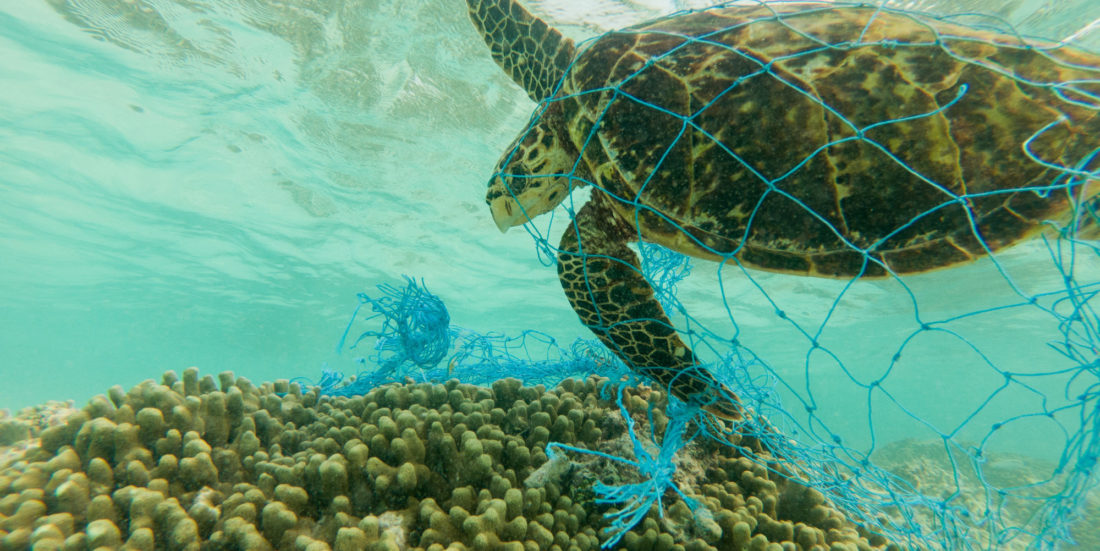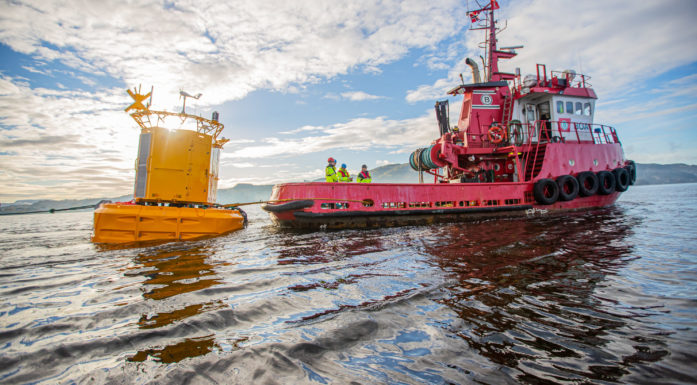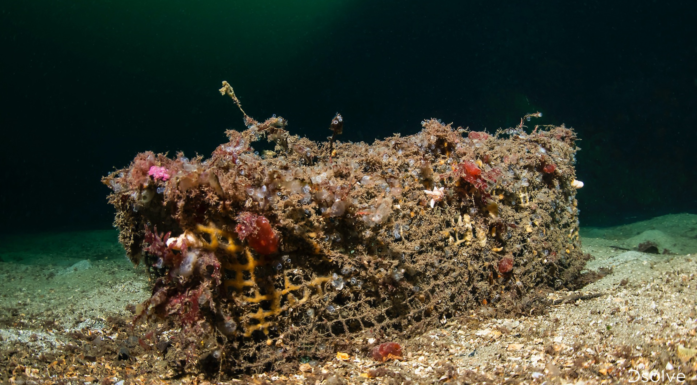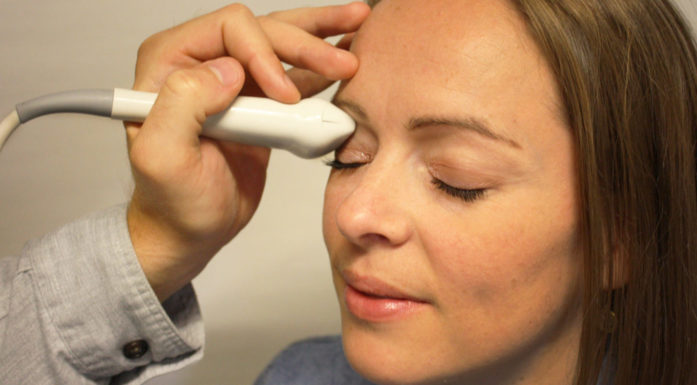Entrepreneurs aim to end ghostfishing
A small device, developed in Norway, will now be used in the battle against environmentally-unfriendly ghost fishing caused by lost or forgotten fishing gear.
Fishing nets have long lifetimes and can cause major damage to marine life if they are abandoned at sea. There are examples of lost nets that have continued to trap fish for periods of up to 30 years.
Ghost fishing by lost or forgotten pots kills thousands of lobsters and crabs every year.
However, it was a high-definition underwater photo of an unfortunate marine turtle, completely entangled in green net mesh, that shocked Tone Berg, a SINTEF researcher and now entrepreneur, into getting to grips with the problem.
“My first thought was that if anyone could take the initiative here, it would be my own institute, which spends its time developing all kinds of sensors and widgets”, says Berg who, for the moment at least, is an acoustics researcher at SINTEF Digital. What if these nets, pots and other gear could be tagged so that it would be easy for us to find them again? Ghost fishing is not only a threat to the environment. The loss of such equipment represents a major financial loss to the fisheries sector – on top of the lost catches involved.
Tackling the problem with “cheap” acoustics
After a quick search on the internet to assess the extent of the problem and find out about existing technologies for the electronic tagging of water-borne objects, it became clear that Berg had found a possible market for an entirely new technology.
Current systems used to transmit signals under water involve so-called transponders. The problem with these is that they are relatively expensive and consume a lot of electricity generated by batteries.
“Batteries have short lifetimes, which in itself represents an additional environmental issue if they cannot be recovered from the sea”, says Berg. “In other words, today’s transponders are not suited to the tagging of fishing nets. But I was wondering whether we could develop a less expensive device that didn’t require so much electricity”, she says.
So, together with her colleagues Tonni Franke Johansen and Odd Trandem, she started work on developing the concept. And after a while, the three SINTEF researchers, who have combined experience in underwater acoustics, medical engineering and modem systems, had prepared a possible solution.
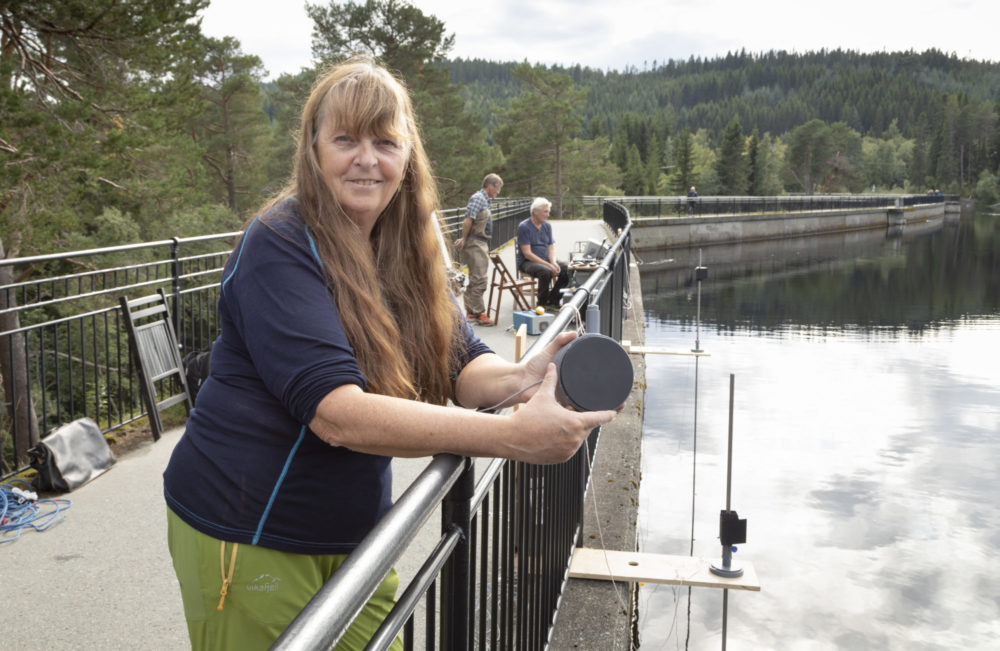
PingMe – a semi-active transponder for tracking and positioning devices under water. This is Tone Berg and colleagues in SINTEF during tests in Baklidammen, Trondheim. Photo: Thor Nielsen
An ID card for fishing nets
The signalling device developed by the research team reflects signals from a tag attached to an object, such as a fishing net. The mechanism is similar to using a key card to unlock a security door. The lock sends a signal to the key card which then reflects the signal back. The reflected signal contains a code that tells the lock which card is being used.
Tone’s colleague and fellow entrepreneur Odd Trandem explains:
“Our tag works in a similar way in that it changes the reflection of the acoustic signal according to a pre-defined pattern. This makes it possible to distinguish this reflection from those generated by other underwater objects. It can also read an ID code. It uses no energy to send out its own signal, and can therefore function for a long time powered by a very small battery.
The research team recently carried out several tests in Blaklidammen lake in Trondheim, and are pleased to report that everything worked exactly as it should.
Using acoustic impulses as a form of “signal language”
The little device has been given the name PingMe because its function is based acoustic impulses, or pings. “Sending acoustic signals underwater is known as pinging”, says Berg. The sender has an operating radius of 500 metres, and is designed to enable it to identify any tagged item of fishing gear. It will also be possible to give a location for the tagged gear in question.
“We’ve found out that the device has potential applications that we hadn’t thought of at first”, says Berg.
When she and her colleagues were in contact with fishermen working in Canada, it emerged that many were interested in tagging their gear using the new technology rather than traditional floats. The reason for this is that because of tough competition, many of the fishermen are wary of giving away the best fishing sites by using floats to tag their gear.
Business
According to Berg, it is possible to use the technology during actual fishing operations. In such situations the device has to communicate with on board sonar or echo-location equipment. This enables better control and monitoring of fishing gear deployed in the water.
Now that further development of the technology has been completed as part of the Research Council of Norway’s FORNY programme, the researchers have been taken under the wing of SINTEF’s research commercialisation company TTO.
The 1. of November, Berg and Trandem will end their careers as researchers at SINTEF and become true entrepreneurs.
When they leave SINTEF to form their own company, they will be supported by SINTEF Technology Transfer’s start-up fund SINTEF Venture V.
“Our aim is to bring the technology to the market, starting with the fisheries sector”, says Berg. “But we’ve also identified many other applications, including in the offshore sector”, she says. Berg has taken out a patent together with the research colleagues with whom she developed the concept.
Tonni Franke Johansen has chosen to remain as a research scientist at SINTEF.
